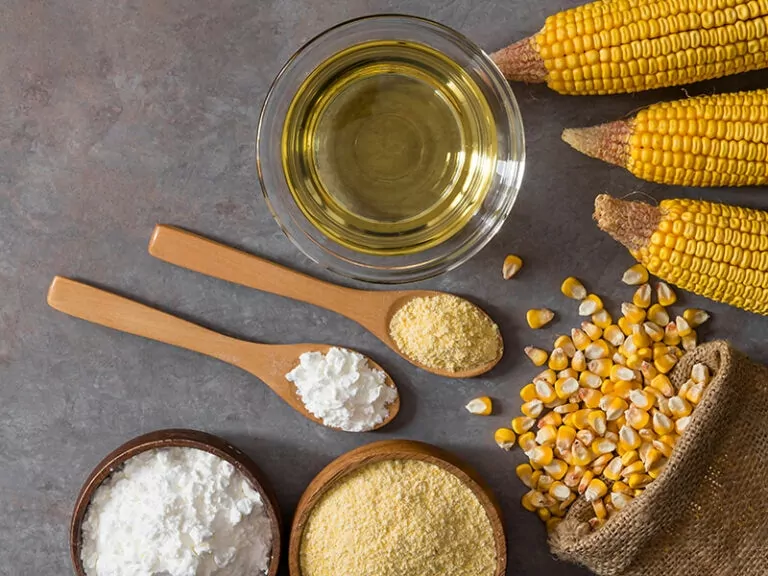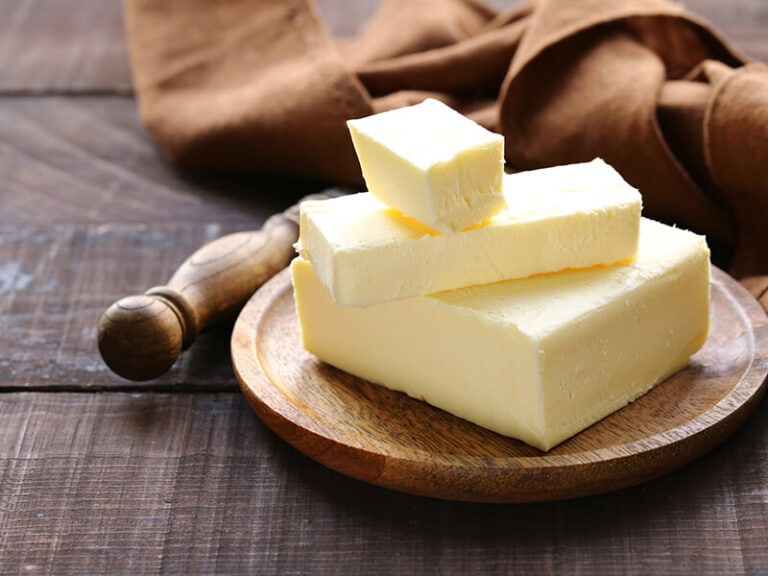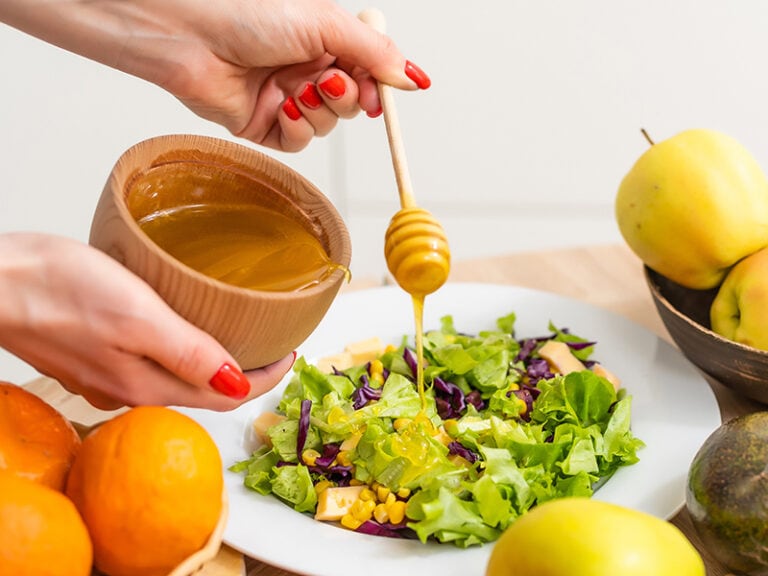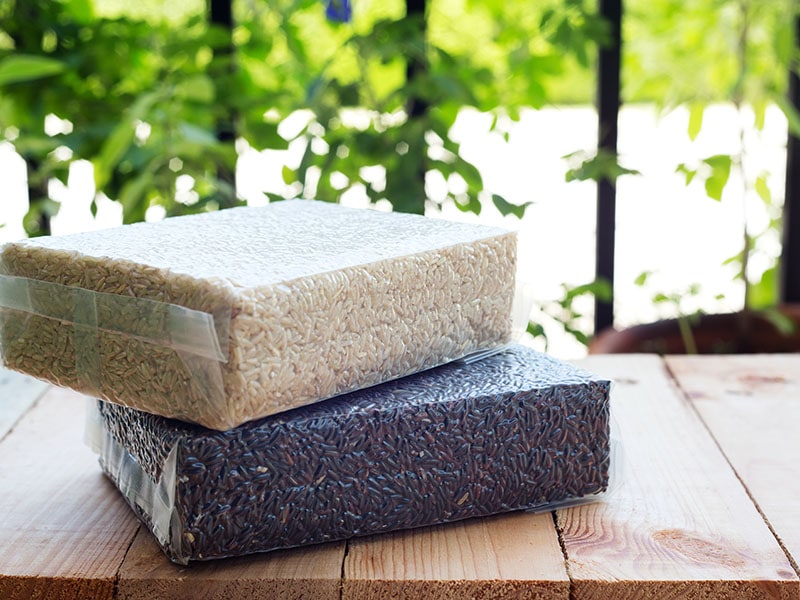
How to store rice long-term is a tough nut to crack. You know you have to prepare some equipment but how exactly to do it? What do you need to get ready? Do you need to dig a whole root cellar under your house for this purpose?
All I can say is that there are many ways to preserve rice long-term, and not all of them will cost you an arm and a leg. This post is going to give you a full picture of storing rice long-term, so let’s sit back because this will be a long river of information to swim across.
Main Types Of Rice You Should Know About
Rice is one of the representatives of the staple food group. It is easy to consume. Some people can develop allergies and intolerance for rice, but the number is just minor. Over 50% of the population eats rice every day. Rice’s stand on the human basics is undeniable.
There are many ways to classify rice, but one of them is by its colors. Here are three types of rice that are common, and you might want to learn more about them.
White Rice
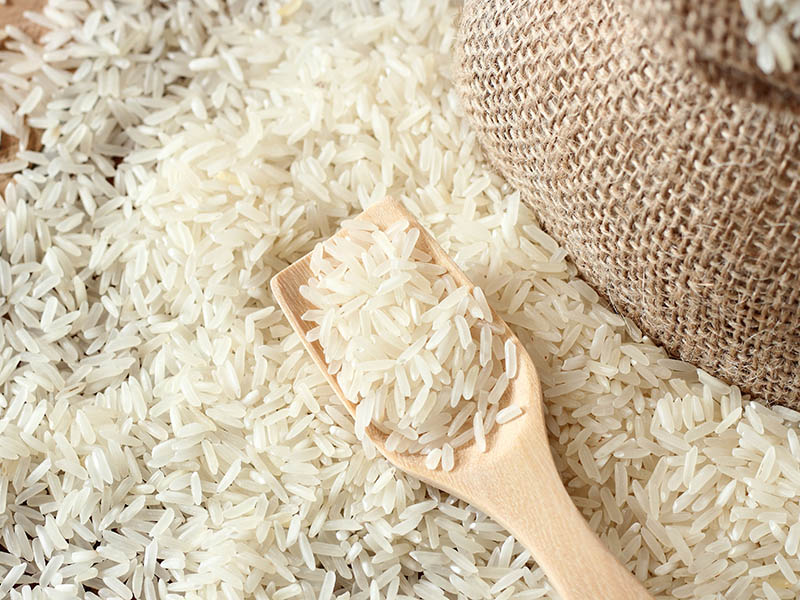
White is probably the most popular color that you see rice dresses on. Basmati, Jasmine, and Arborio are all white, although they come from different places in the world.
Rice is white because its husk and bran are removed after the harvesting. This removal process is called milling or hulling. After that, people polish the rice with a rice polisher to make the rice looks more commercially appetizing.
One of the benefits of hulling is to maintain the shelf life of rice. Hulling helps extend rice’s life from months to years. The bran layer of the rice contains oil which causes the rice to go bad quicker.
White rice is fluffy and very fragrant when it is cooked. They can be creamy or harder due to the type of rice and how you cook it.
However, while hulling and polishing give white rice an appealing appearance, those processes also cause some problems. They deplete lots of nutrients in rice like vitamin B1. But the bran removal helps prolong white rice’s shelf life.
Consuming white rice improves people’s digestive systems. It also gives people a healthy source of energy. Athletes prefer having white rice since it recovers their vigor efficiently.
Besides the benefits, the potential of arsenic poison and an increase in blood sugar are also problems that you need to be concerned about. You can, and you should eat rice, but it is better with a moderate amount every day.
Brown Rice
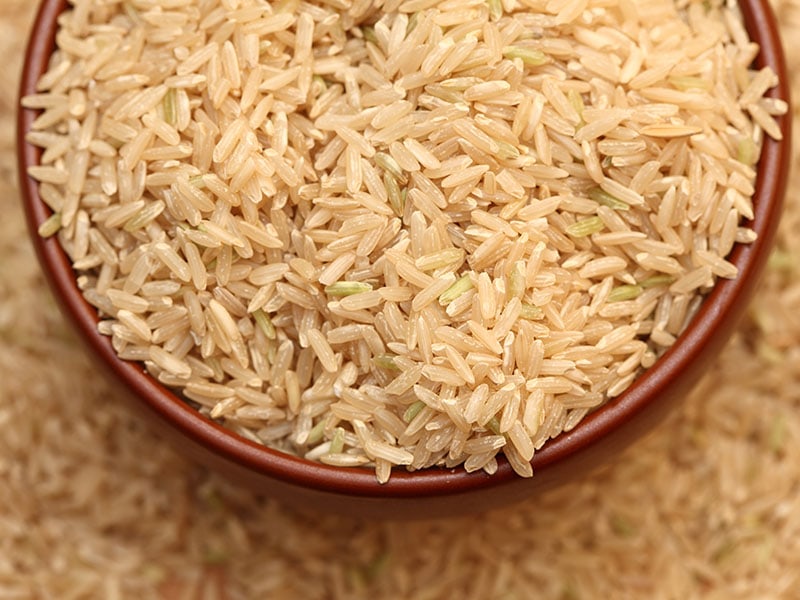
Brown rice is white rice but with bran. And because this layer is brown, it makes this type of rice wear a brown suit.
There is a never-ending battle between white rice and brown rice regarding their nutrition. Since brown rice keeps its bran, there is so much more fiber in it. Brown rice also maintains its intrinsic nutrients and doesn’t need to be enriched.
When cooked, brown rice owns a fascinating lighter brown color. Its smell is nutty and earthy. The taste is not just sweet like regular white rice but also earthy, and it is so much chewier than white rice.
The bran layer of rice contains a lot of vitamin B and minerals. Not removing this layer makes brown rice more nutritious than white rice.
However, keeping the bran makes it harder for human digestion to break it down. Eating brown rice can exacerbate your stomach disorder or affect your recovery if you have bowel surgery. In addition, because of that attached bran, brown rice has an ephemeral shelf life.
If you want to cut out sugar intake because you want to lose weight or you have diabetes, brown rice is a better solution for you compared with white rice.
Wild Rice
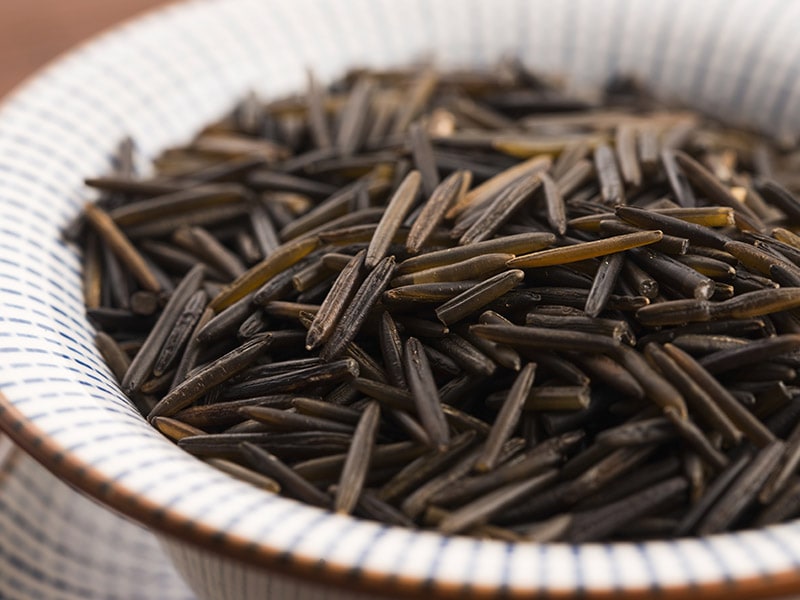
Wild rice is like a black sheep among all types of rice. It doesn’t share the same genus with the current domestic cultivars. Originally, wild rice came from China and North America, but the Chinese don’t have this rice in their meal as much as their ancestors.
You can call wild rice by other names like Canadian rice, Indian rice, or water oats. People describe wild rice when it’s cooked as hard to chew. It is nutty, earthy, and smells like black tea. Additionally, wild rice can have a very long shelf life, just like white rice.
Wild rice is an extremity of nutrients. It contains high fiber and antioxidants. Often consuming wild rice can help your diabetes, enhance your heart health, and against the inner inflammation.
But at the same time, wild rice is still aquatic grass, and this type of plant always has metal components in its crops. Having too much wild rice can lead you to metal poison. People have found lead, arsenic, and cadmium in 26 brands of wild rice in the US. (1)
Here is a detailed guide that can tell you how to cook and eat wild rice.
Factors That Threaten Your Rice Storage
Rice is a very nutritious food, and after the first section, you are probably thorough about it now. And your rice’s enemies also know about that fact.
In this section, I will give you information about common factors that might disturb your rice during its long-term safekeeping.
Vermin Infestation
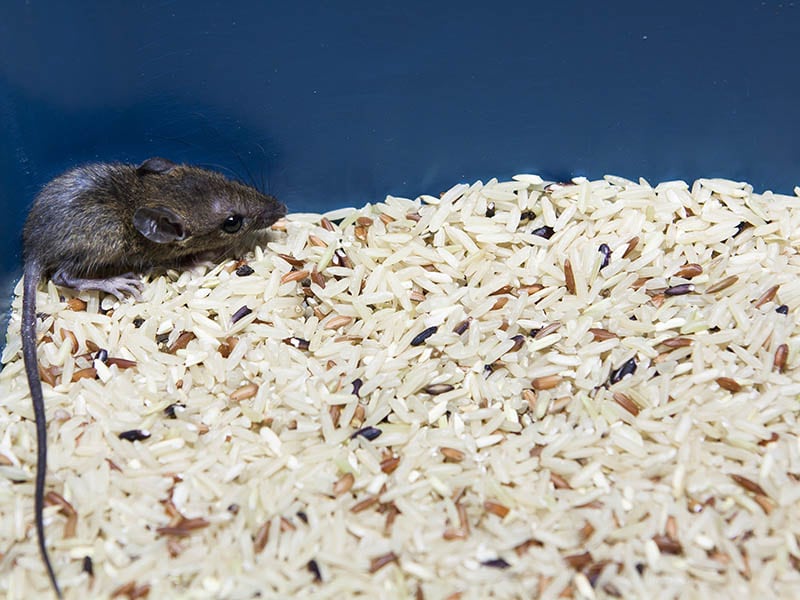
As a staple food, rice is the target in the “A list” of vermins, which are pests or animals that can cause damage to your crops or livestock. They can cause havoc and destroy your harvest. Vermin is a term that relates specifically to agriculture or human activities.
Rodents are one of the honorable members of the vermin gang. These rodents, like rats or mice, are constant guests in your kitchen, and if they notice your rice, they will destroy your container with their very strong jaws and infest your rice with their urine and feces.
Another boss of the vermin gang is cockroaches. There are 30 species, and they are your rice enemies. Besides eating your rice, their terrible natural odor can make your rice smell horrible. They also enjoy dumping their waste on your rice.
But the most notorious candidate is rice weevils. Rice weevil is the insect type that loves living and spreading their offspring around. With one female rice weevil, it can manifest your whole barrel of rice in just a few days.
Rice weevils eat your rice, then lay their eggs inside the grains. One female weevil can lay 500 eggs every day. And when the eggs hatch, the larvas eat that grain from the inside and break free when they are mature. That’s why rice dust is the sign of rice weevils.
These are three examples of pests that could harm your storing rice. It is important to check your rice occasionally and keep an eye for signs like odors or feces. With vermin, you need to get rid of them as soon as you notice their appearances.
Learn more about how to eliminate rice weevils in your rice.
Mold Infestation
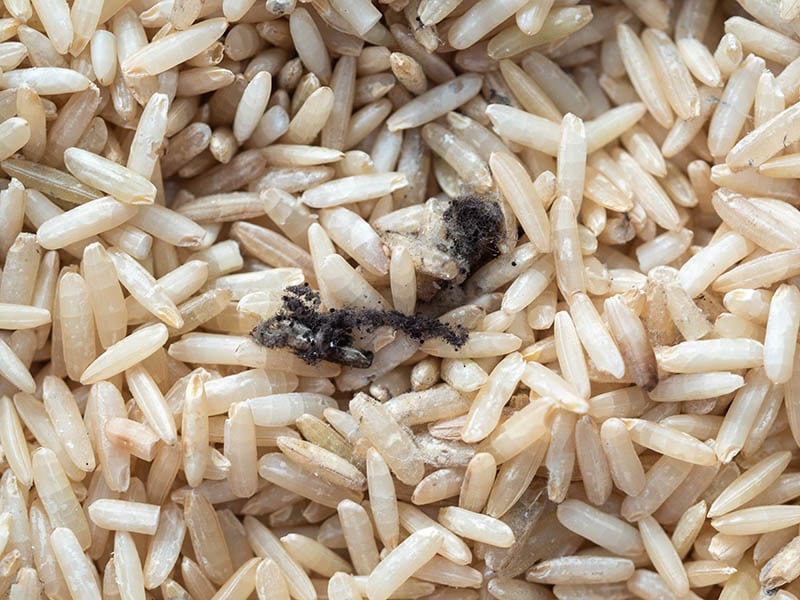
Mold is something not only disgusting but also poisonous. Whenever you spot molds on your food, you know you have to throw that food away. And mold is also very comfy since it can live in any place that gives it enough nutrients and water. Your rice is not an exception.
Mold on rice is typically Aspergillus oryzae and Rhizopus stolonifer. Therefore, the two typical colors that you can observe on the rice mold are white and black.
Some people wash that rice with water and then dry the rice because they think they can clean that mold. But it is still very unsafe to eat that rice because the moment you catch the mold patch, its roots must have thrust deep into your rice.
To avoid getting mold on your rice, you need to keep your rice somewhere dry and cool. Mold needs water to start to grow on your rice, and this water can even be from humid air.
One of the things that mold needs to survive is oxygen. Therefore, a vacuum container will be the best to prevent mold infestation.
Watery Condition
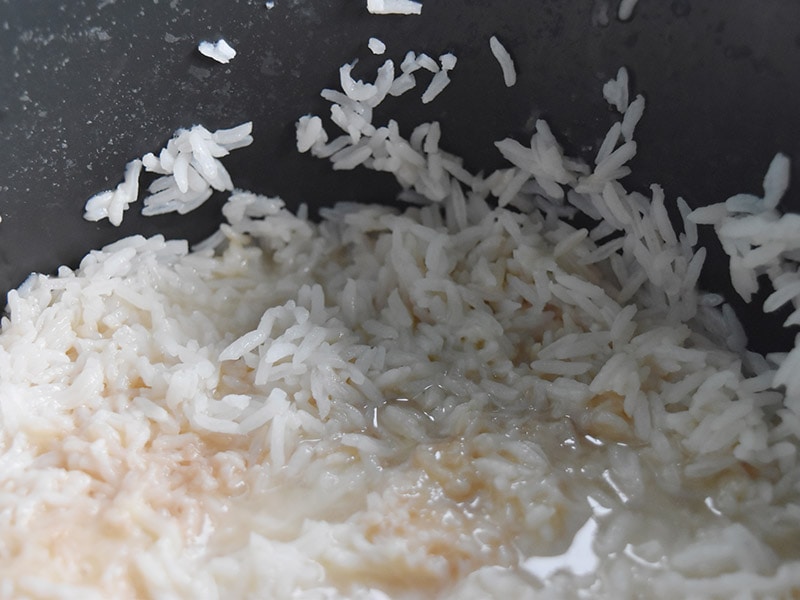
Not just because water can provoke fungus spores to grow on your rice, water can alter your rice texture. Wet rice is more fragile than regular rice, even when the rice is dry again. When you cook this rice, it will be more mushy and gooey.
A bacteria species named Bacillus cereus is naturally having its spores everywhere in the air, and it is also in your rice. Damping your rice is the last step to nurturing that spores to grow. An infestation of B.cereus can lead to food poisoning for those who consume it.
B.cereus spores will not grow if your rice is stored in a dry and cool environment. Same with mold, B.cereus will also need oxygen to flourish.
Oxygen And Oxidation
Oxygen not just affects your rice with other biological factors like molds or bacteria. Since your rice is an organic product, oxidation can occur whenever exposure happens. You can’t see this happen regularly with white rice if long-term storage is still unfamiliar to you.
This oxidation usually takes a long time, and it changes your rice color as well as its smell. You can see signs of oxidation on brown rice more often due to its high fatty acid contribution. Oxidized brown rice has a rancid smell and increases moisture content.
The best method to stop or procrastinate oxidation with rice is to cut out the exposure between rice and air. That means if you want to store rice long-term, vacuuming is a must.
Methods That You Can Apply To Store Rice Long Term
Depending on how long you want to store your rice, the methods below will gradually increase the year of storage until you reach the maximum, which is 30 years. The three main conditions of these methods are dryness, low temperatures, and oxygen exposure.
As I mentioned earlier, brown rice has its bran attached to the outer layer, which makes it have the shortest shelf life among the three types of rice. Therefore, these methods can only be suitable with wild rice and white rice.
Brown rice is not a food that should be stored long-term due to its natural short life and its high fatty acid component. The best method you can use on brown rice is freezing the rice, and your brown rice can last for 18 months.
Airtight Container Or Bag (4-5 years)
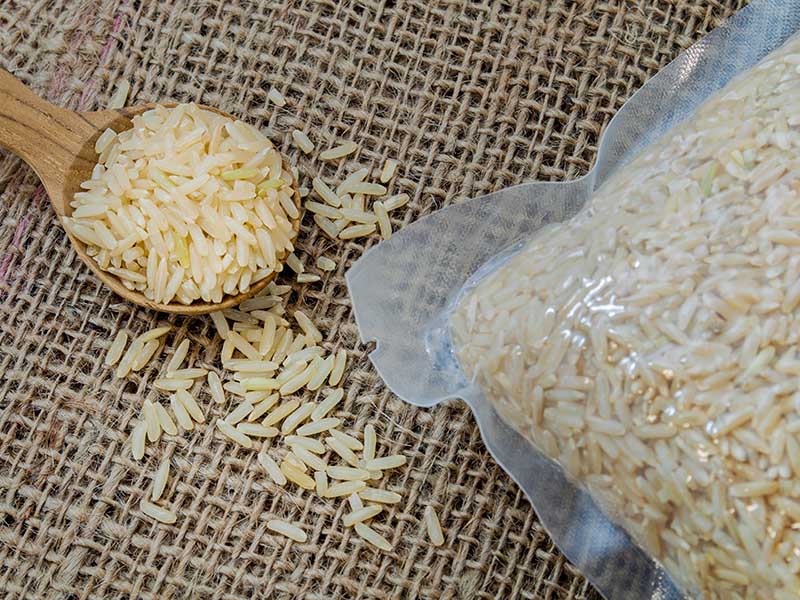
This method applies to people that buy rice in bulk and who want to have a prominent environment for their rice. It’s cheap and easy to do.
Before you start, you need to prepare some pieces of equipment and materials:
- Airtight bag or container. You can use any kind of materials for your container that you want. If you are storing a large amount of rice, you will need a big bag or big container.
- A vacuum sealer.
- Food label.
- Bleach to sanitize the outside container.
- Big container. A bucket with a tight lid will be suitable for this process. It is better to use the one reserved for containing food to avoid contamination.
Step 1: Pack Your Rice
Pour your rice from its bag into your vacuum bag or container. Some brands have their rice packed in a vacuum bag when you purchase it at the grocery store. If so, you can skip this and the second step.
Step 2: Vacuum Your Bag Or Your Container
This step is to get rid of oxygen in your rice. It will promise your rice a “no mold no damp” environment. After checking that your bag of rice has a good amount of rice, you vacuum it.
Some people use a regular plastic ziplock and then suck the air out of the bag with a straw. This is not an effective method in this case since you need to remove 100% of the oxygen in the bag. Hence, using your mouth will spread humidity into the bag and trap water in there.
After vacuuming, you will want to label your bag. A date, weight, and type of food will be things that you want to note.
Step 3: Put Inside The Big Container
Before you put your vacuum well-sealed plastic bag of rice in there, you need to sanitize this container with bleach. It will eliminate any trace of bacteria or mold spore in the container.
Plastic bags or a container sometimes is not enough to stop the attack of rats. And to defend your rice, you should have another layer of thick plastic or metal. This outer layer will also protect your bag of rice from physical collisions that can tear your bag apart.
You can store this container somewhere dry and cool, like your root cellar or basement. You will not want to expose this container to the heat and sunlight since these are the biggest enemies of plastic through time.
You should stick another label on this container as well in case the other label is faded or ripped off for any reason.
Mylar Bag (10 years)
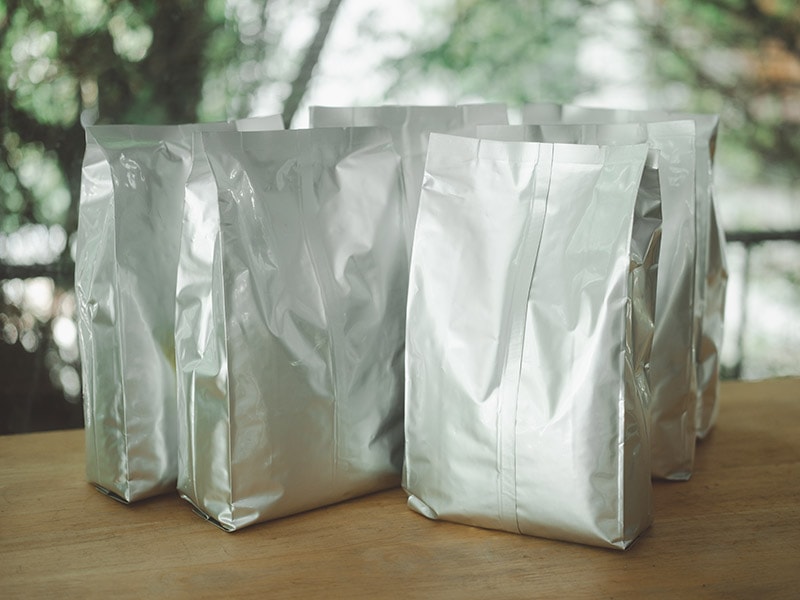
This method is almost the same as the previous one. However, instead of using the regular food bag or container, you will use a more advanced bag named Mylar.
Mylar bag, or foil pouch, is a type of bag that was designed for storing food long-term. Besides food, laboratories also use this bag to contain their example due to its thick and safe skin.
Made of several layers of plastic and aluminum, this bag is the epitome and the highest class of long-term food storing. It can protect your rice from heat, light, and air if you vacuum it.
You need to prepare these for this method:
- Sealable Mylar bags. You will also want to use a large volume Mylar bag for storing rice in bulk.
- A vacuum sealer that is rated for Mylar bags.
- Food label
- Bleach
- Bigger container
Step 1: Fill The Mylar Bag
You should check the bag before filling it in case there is any damage to the bag. After filling it, you seal the bag and add a label with information about your rice on it.
Step 2: Vacuum The Mylar Bag
You will need a specific vacuum sealer for this step since not all vacuum sealers can be used on the Mylar bag.
If you don’t want to buy an expensive vacuum sealer for this step, you can add some oxygen absorbers to the bag before sealing it.
Another solution for this matter is putting the Mylar bag inside another regular plastic food bag. You don’t seal the Mylar bag tightly so air from it can go out through the vacuum machine. At last, you shut the outer bag.
Step 3: Put Your Mylar Bag In The Bigger Container
Just like the previous method, you should sanitize your bigger container and then store your Mylar bag in there. This step will ensure the safety of your Mylar bag from the teeth of those mischievous rats.
Learn about how to use Mylar bag from a step-by-step visual guide.
Freezing (30 years)
And the ultimate way of protecting your rice is Mylar-pack that rice and put it in the freezer. Mylar bag will save your rice from light, water, and air.
Storing the rice in the freezer will be even more secure with no vermin can enter. The temperature in the freezer can be controlled and decrease the growth of mold and bacteria.
All The Essentials Of Storing Rice Long Term
Let’s learn a bit more about all the equipment in the storing process. These tools and materials can be too complicated to use sometimes, so knowing more about them will help you feel more comfortable with the process.
Bucket, Barrel, Containers, Bags
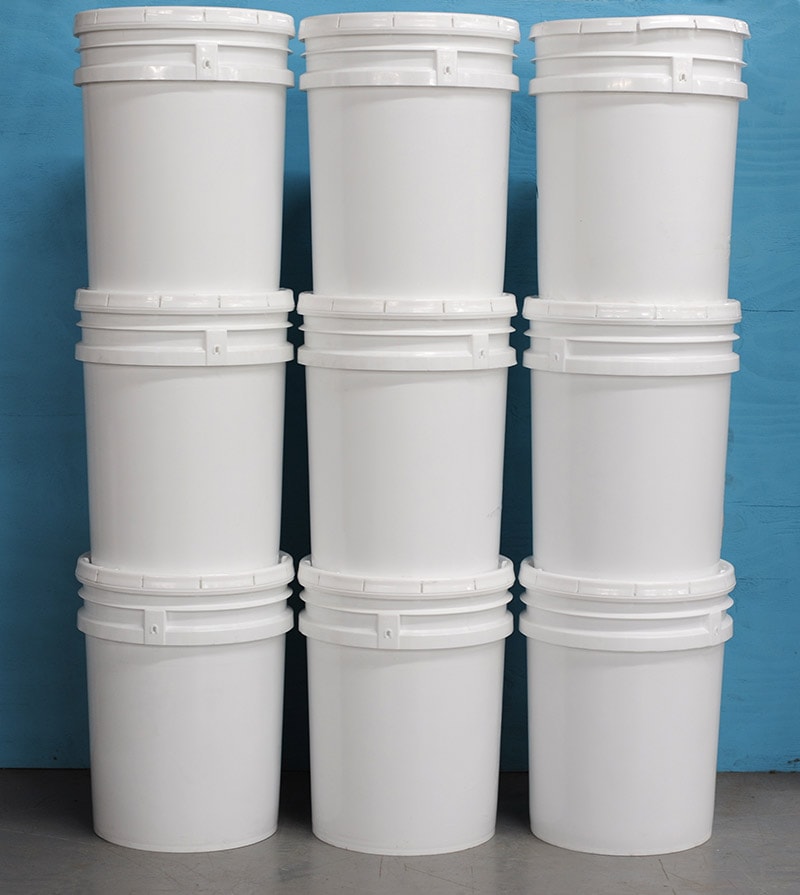
Let’s talk about the containers. With the outer layer, you can use any type of big container like a bucket or a barrel. This layer needs to be thick and hard since it will have to deal with the environment for 10 or maybe 30 years.
The bucket should be well-lidded, and it is best to use one with the plastic O ring cap. You also want your bucket not to contain Bisphenol A (BPA). BPA is an additive that could be added during plastic manufacture, and it can induce the human body to develop diseases.
The inner layer, which is the bag or the container, should meet the standards. You will want to make sure it doesn’t have any rip. You will also want to check that it doesn’t smell too bad or is too damp to contain rice.
Storage Labels
Storage label is simple and useful, especially when you want to store food for the long term. However, there are some tips you can apply to your labels.
When you write the label, you will want to focus on some main details like the type of food in the bag, the weight of the bag, the date you buy the grocery, and how long it can be stored. Don’t write in illegible handwriting, or all of the labels will be useless in the future.
To have a proper label system in your pantry or your storage, you should develop your own color code or numeric order. For example, you can consider labels for staple food and blue labels for dried herbs.
You shouldn’t use a pencil to write down information on the label. Graphite from the pencil is not a permanent ink like Sharpie. Your writing can easily fade after a long time or when you accidentally make it wet.
Labeling food correctly helps you a lot when you want to use it.
Mylar Bag
Many people start to use Mylar bags to save their food for the long term due to how secure this bag is. Moreover, you can reuse this bag after washing it.
Mylar bag can be the sealable type or the regular type where you need to use heat to seal the bag. A household iron can be capable of doing this task. Because of this complication, it is hard to vacuum Mylar bags without a good vacuum sealer.
Even though a Mylar bag is so much more sturdy than a regular plastic bag, it is still no match for the rodents’ jaws. Therefore, if you want to store food in a Mylar bag for a long period, you still need a barrel or a bucket to cover the bag.
Vacuum Sealing
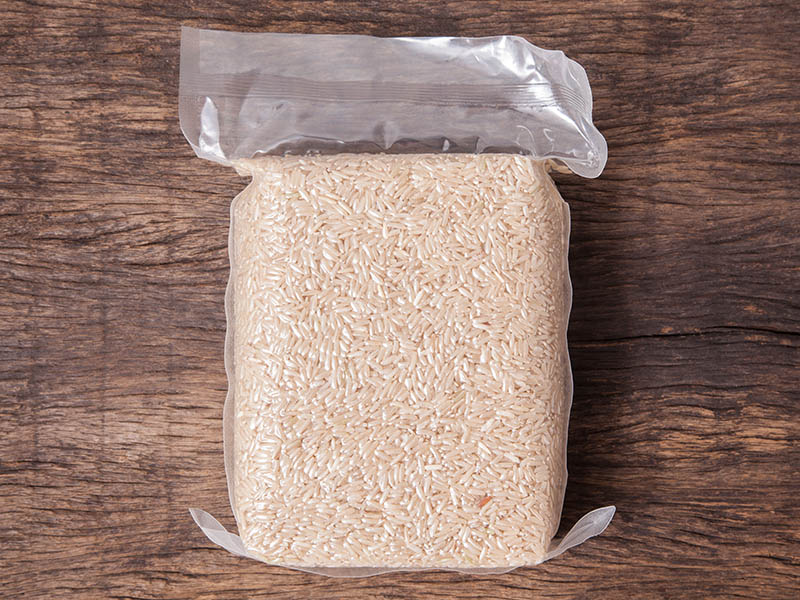
Vacuum sealers have become extremely popular these days since it helps prolong food shelf life. It is also an unskippable step when you want to make sous vide dishes.
You can use a vacuum sealer to save all kinds of food, but there are some exceptions, like garlic and onions, since they can emit gas and leak out of the bag. The vacuum sealer is particularly useful in preserving rice.
When vacuum sealing liquid or any dusty food, you need to be aware that the machine can pull the liquid or the dust-up. This event can damage your vacuum sealer severely. To avoid this accident, you can elevate the sealer to a higher position compared with your food.
Some Excellent Tips That You Can Apply On Storing Rice
There are some extra steps that you can add to enhance your process. These tips can even apply to regular storing methods. Some you can practice on other dry food other than rice.
Scare All The Insects Away
The best measure that you can practice when you want to preserve your rice is to get rid of all the risks. With air or temperatures, not everybody can have the means to control them. But you can do something like shooing all the vermin away.
With Chili Pepper And Garlic
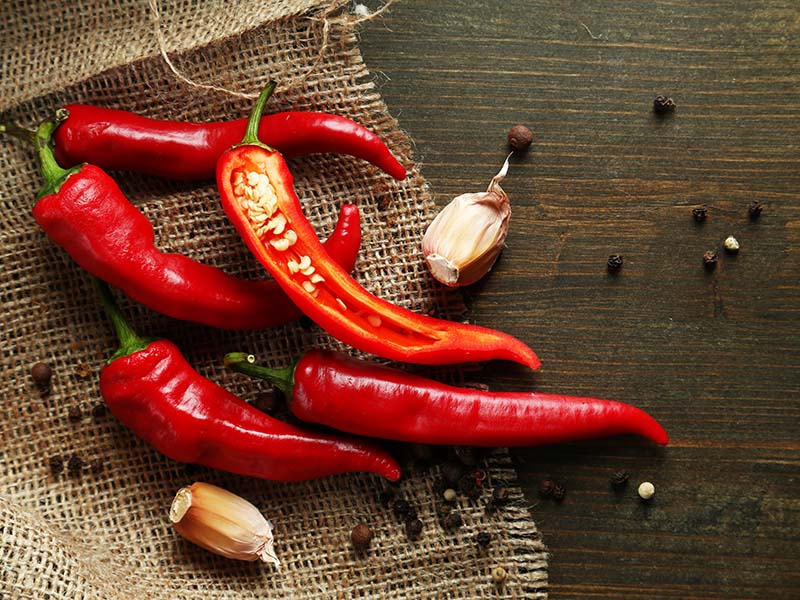
Simply put a head of garlic or a dried chili pepper in your rice container. If you have a bigger container like a whole barrel, don’t be too shy to leave more. The smell of chili pepper or garlic can discourage weevils and cockroaches.
Some people also use lemongrass or ginger instead of pepper and garlic, but these two are the most common and used by many. And you don’t have to worry about the smell of your cooked rice. Their aroma can’t stay on your rice after you wash it.
With Salt
This method is unusual, but it works. You can sprinkle salt on your rice. This is a traditional remedy from the belief that when weevils eat salt, they will hate the savory and leave your rice alone.
One side effect of this method is that if you use too much salt, your rice will be briny.
With Alcohol Or Vinegar

Another secret to help your rice is using alcohol or vinegar. Apparently, insects and rodents hate the smell of alcohol to guts, and they will leave your rice alone.
To apply this method, you can leave a cup of alcohol or vinegar in your rice container. And do not cover the cup since the vermin needs to smell the aroma. You can wipe your pantry with this liquid so your other condiments can be safe as well.
One backfire of this method is that both alcohol and vinegar evaporate quickly, so you will want to change your cup every week. Also, you should use alcohol with a strong smell like base liquor (brandy, vodka, gin, tequila, whisky, and rum). (2)
Sun-Dry Your Rice
This is one of the very efficient ways to eliminate rice weevils and other bacteria. Your rice can always be damp at any time that you can’t always control, so it would be a nice habit to occasionally sun-dry your rice.
If you have an oven, you can use the oven-drying method to dehydrate your rice. But if you intend to get rid of weevils and other insects, sun-drying is still more advantageous.
Oxygen Absorbers And Moisture Absorbers
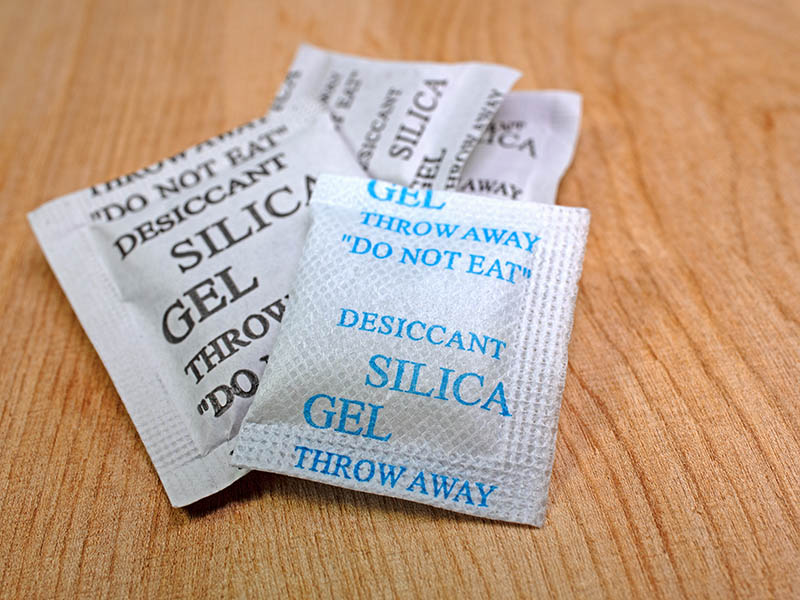
This is something you can put inside your rice for long-term storing. Like their name, oxygen absorbers will absorb all the oxygen in the air, and moisture absorbers will do the same thing with moisture.
For long-term storing, you can put oxygen absorbers inside the bag. They both don’t have an expiration date, but they can be filled up and unusable. Both types of absorbers are made from non-toxic yet inedible materials.
You can apply this method with your pantry rice or condiment as well. But in this situation, a moisture absorber is enough since you have to open the jar daily, it will be pointless to have an oxygen absorber inside.
Many people are still confused about these oxygen absorbers and moisture absorbers.
FAQs
You might still have some questions that bother you in your mind. This section is where I can give you more information about rice and storing rice.
Your Rice Storage Is Ready For An Apocalypse
Rice can have 10-30 years of shelf life, depending on how you want to store them. Three significant elements to storing rice long-term are water, air, and heat. You will also want to avoid vermin in your storage.
I hope that you have widened your horizons today. Since this post is so helpful to you, why don’t you share it with your friends and family? Anyway, it has been a long journey. Keep asking questions, and stay curious!

